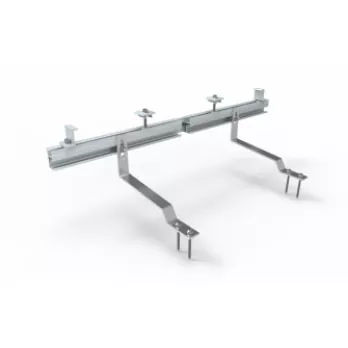A Guide to Asphalt Shingles Roof PV Mounting Structures
2025-03-13
As solar energy adoption grows, many homeowners and businesses are looking for ways to install solar panels on their existing roofs. One of the most common roofing materials in residential buildings is asphalt shingles. While asphalt shingle roofs offer durability and affordability, proper installation of photovoltaic (PV) mounting structures is essential to ensure stability and efficiency.
In this blog, we will explore what an asphalt shingles roof PV mounting structure is, how it works, and the key considerations when installing solar panels on this type of roof.
What is an Asphalt Shingles Roof PV Mounting Structure?
A PV mounting structure is a system designed to secure solar panels onto a roof. For asphalt shingle roofs, special mounting solutions are required to prevent leaks and structural damage. These systems typically consist of:
- Flashing – A protective metal plate that prevents water penetration around the mounting points.
- Mounting Brackets – Secure attachments that hold the solar panels in place.
- Rails or Racking System – A framework that supports multiple solar panels.
- Sealants – Waterproofing materials used to maintain roof integrity.
Proper installation of these components ensures that the solar panels remain securely attached while preventing roof damage.
Installation Process of a PV Mounting System on Asphalt Shingles
Installing solar panels on an asphalt shingle roof requires precision and care. Here is a step-by-step guide to how professionals install a PV mounting system:
1. Roof Inspection
Before installing solar panels, the roof must be inspected to ensure it is in good condition. Any damaged shingles should be replaced to prevent future issues.
2. Locating Roof Rafters
Roof rafters provide the structural support needed for solar panel mounting. Installers use stud finders or measurements to locate these rafters.
3. Installing Flashing and Mounts
Flashing is placed under the shingles to protect against water leaks. Mounting brackets are then securely fastened into the rafters to ensure stability.
4. Attaching Rails and Racking
Rails or racking systems are attached to the mounts, creating a sturdy base for the solar panels.
5. Securing Solar Panels
The solar panels are then installed onto the racking system, aligned properly for maximum sun exposure.
Advantages of Using an Asphalt Shingles Roof for Solar Panels
- Widespread Availability – Asphalt shingles are the most common roofing material, making solar installations accessible to many homeowners.
- Durability – With proper installation, the roof and solar panels can last for decades.
- Cost-Effective – Installing solar panels on asphalt shingle roofs is generally more affordable than on other roofing types.
- Energy Savings – Solar panels reduce electricity bills and provide long-term financial benefits.
Installing a PV mounting system on an asphalt shingles roof is an effective way to harness solar energy while maintaining roof integrity. With proper installation techniques and waterproofing measures, homeowners can enjoy a secure and efficient solar energy system for years to come.



